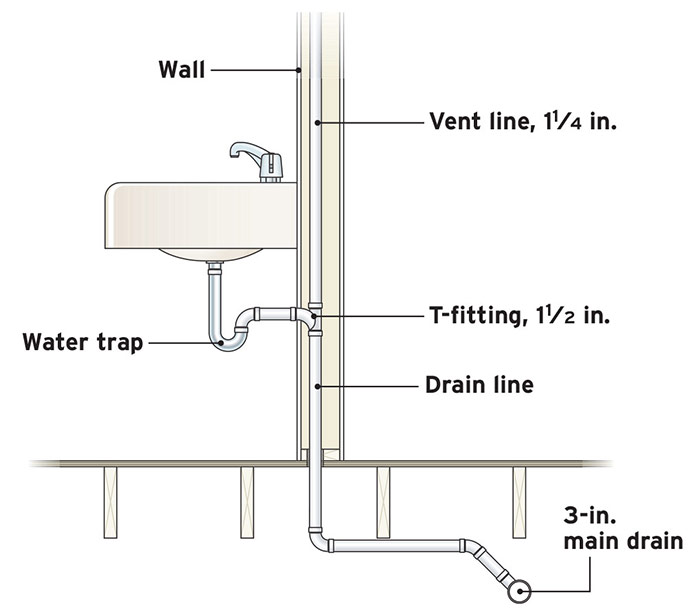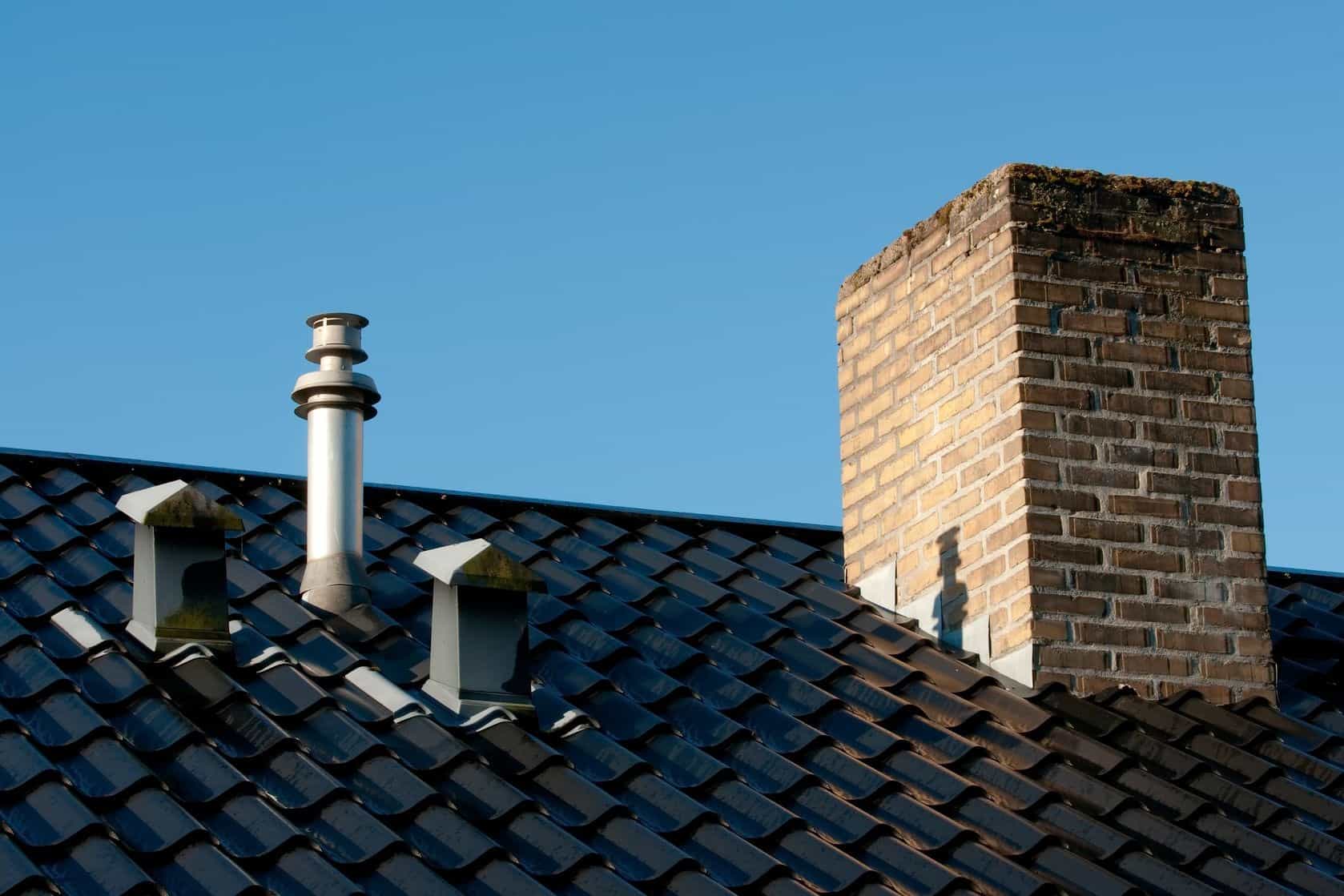The Significance of Proper Ventilation in Home Plumbing Systems
The Significance of Proper Ventilation in Home Plumbing Systems
Blog Article
The publisher is making several great observations regarding What Are Plumbing Vents and Why Are They Important? in general in the content which follows.

Correct ventilation in pipes systems is commonly forgotten, yet it is important for keeping the capability and safety of your home's plumbing. Air flow helps control atmospheric pressure, stop the build-up of unsafe gases, and ensure the reliable elimination of waste. In this overview, we will explore the significance of appropriate plumbing air flow, just how it works, and the benefits it offers your plumbing system.
Recognizing Air Flow in Pipes
Ventilation in plumbing describes the network of pipelines that enable air to flow with the water drainage system. These vents offer numerous objectives, consisting of managing air pressure within the pipelines, preventing sewage system gases from entering the home, and assisting in the smooth flow of wastewater.
Just How Air Flow Functions in Plumbing Systems
Atmospheric Pressure Policy
Proper ventilation preserves well balanced air pressure within the pipes system. When water flows via pipes, it displaces air. Without ample ventilation, this variation can produce adverse pressure, leading to slow drains or siphoning of water from catches, which can create undesirable smells to permeate right into the home.
Protecting Against Sewage System Gas Buildup
Among one of the most important features of pipes vents is to avoid drain gases, such as methane and hydrogen sulfide, from building up within the home. These gases can posture significant health threats and are highly flammable. Vent pipes permit these gases to run away securely outdoors.
Assisting in Waste Removal
Air flow aids in the efficient removal of wastewater by stopping airlocks in the water drainage system. When air can move freely through the vents, it allows water and waste to stream smoothly with the pipes, minimizing the danger of obstructions and back-ups.
Kinds Of Plumbing Vents
Main Heap Vent
The primary stack vent, also called the air vent pile, is the key vent in a pipes system. It expands from the primary drainpipe line up with the roof covering, enabling gases to leave and fresh air to enter the system.
Branch Vent
Branch vents attach to the main pile vent and offer private components, such as sinks, commodes, and showers. These vents guarantee that each fixture has adequate air flow to function correctly.
Air Admittance Valve (AAV).
An Air Admittance Valve (AAV) is a one-way shutoff that enables air to get in the plumbing system without the need for a standard vent pipe prolonging via the roof. AAVs are generally made use of in restorations or areas where installing a common air vent is impractical.
Indicators of Poor Air Flow in Pipes.
Slow Draining Fixtures.
If your sinks, bathtubs, or commodes are draining pipes gradually, it could be an indication of bad ventilation. Insufficient air flow can produce a vacuum result, making it tough for water to drain properly.
Gurgling Appears.
Gurgling noises coming from drains pipes are typically an outcome of air being sucked through water traps due to adverse pressure in the pipes. This is a clear sign of inadequate ventilation.
Undesirable Odors.
Sewage system odors inside your home are a red flag that your plumbing system is not correctly ventilated. This might imply that sewage system gases are not being adequately aired vent outside, resulting in possibly unsafe problems.
Common Ventilation Mistakes.
Inadequate Vent Sizing.
Utilizing undersized air vent pipelines can cause poor air flow and pressure discrepancies in the system. It's vital to make use of vents that satisfy the particular demands of your plumbing system.
Improper Vent Placement.
Positioning vents as well far from the components they offer can lower their efficiency. Proper placement makes sure that air can flow openly and successfully with the system.
Disregarding Code Demands.
Building ordinance give details guidelines for pipes air flow. Neglecting these codes can result in a system that falls short to work correctly and may lead to expensive repair work or carcinogen.
Advantages of Correct Air Flow.
Improved System Performance.
Properly ventilated pipes systems run a lot more efficiently, with fewer blockages, faster draining pipes, and much less pressure on the pipelines. This efficiency extends the life expectancy of the plumbing system.
Improved Air Top Quality.
By avoiding sewer gases from entering your home, appropriate ventilation adds to far better interior air high quality, making your living setting healthier and extra comfy.
Avoiding Water Damages.
Appropriate air flow assists avoid water from being siphoned out of traps, which can bring about sewage system gases going into the home and causing water damage in time.
Actions to Make Sure Proper Air Flow.
Consulting Plumbing Codes.
Always speak with neighborhood plumbing codes when creating or modifying your plumbing system. These codes offer the necessary guidelines for appropriate venting and ensure your system satisfies safety criteria.
Regular Assessment and Maintenance.
Regular inspections can help determine prospective air flow problems prior to they end up being major issues. Maintenance jobs, such as cleaning air vent pipes and checking for blockages, are vital for maintaining the system in good working order.
Professional Installment.
For brand-new installations or significant alterations, it's important to hire a specialist plumber. They have the know-how to ensure the ventilation system is correctly made and mounted according to code.
Conclusion.
Appropriate air flow is a crucial component of any type of plumbing system, making sure that it functions successfully and safely. By comprehending the value of air flow, acknowledging the signs of inadequate ventilation, and taking actions to preserve your system, you can prevent costly issues and protect your home's air high quality.
Understanding the Role of Your Plumbing Vents in the Drainage System
The plumbing system in your home is more than just the kitchen sink, toilet, and bathroom. Some problems that arise within home plumbing are hard to detect because homeowners may not understand potential causes.
One part of the plumbing system that could cause you endless problems is the venting. The drain lines that run through your home and drain wastewater need proper venting to function properly. Faulty plumbing vents can lead to several problems that require the expertise of a plumber to check them out. Before finding experienced plumbing services, there are a few things to learn about plumbing vents.
Why vents are vital
Vents in the plumbing system lead to an outside area such as the roof or the back. The function of these vents is to keep sewer gases away from the drain pipes. They also establish seals in the drainage pipes that prevent the sucking back of waste gases into the home. Venting in the plumbing system also allows oxygen to get into the drainage system, which is an essential component in the breakdown of waste matter. The vents also ensure that the air pressure within the drainage system remains balanced, facilitating the flow of wastewater.
Possible problems
When the plumbing vents are problematic, one of the consequences is imbalanced water levels in the toilet. If you notice that the levels in the toilet bowl rise and fall all the time, then there may be something wrong with the vents.
Another issue is air bubble formation within the toilet. In most cases like these, the drain pipes are not receiving enough air. Lack of air pressure equalization is what leads to water flow problems. If you come across such issues in your home, make sure you call professional plumbers, such as the ones from Perfection Plumbing & Drain Cleaning Ltd.
Potential causes
Several scenarios can lead to some of the plumbing problems that homeowners suffer because of venting. One such scenario is the use of incorrectly sized vents. Usually, vents are the same size as the drain line to facilitate proper venting. Vents that are too small will lead to some plumbing issues. Another potential cause is fixtures that are not close enough to the vents. In this scenario, air forces itself through the traps of other fixtures, leading to gurgling sounds from toilets and sinks.
Most of these problems also happen with clogged vents. Tree leaves and debris can cause clogging when they make their way down a vent. Unclogging plumbing vents is a service that you can entrust to Saskatoon plumbers. They will know how to snake down vents and remove clogging stuck in fixtures.

I'm very serious about and I really hope you liked our blog entry. I beg you pause to share this article if you liked it. Kudos for your time. Revisit us soon.
Call Today Report this page